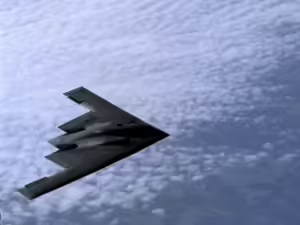The White House warned in a letter to Congress yesterday (Monday) that military and economic assistance to Ukraine will run out by the end of the year without additional funding. Failure to allocate new money would “kneecap Ukraine on the battlefield”, according to budget director Shalanda Young.
Since the start of its highly anticipated counter-offensive in June, Ukraine has:
- Reclaimed around 200 sq km of territory (it re-took 8,600 sq km in less than two months during its 2022 counter-offensive), and
- Suffered tens of thousands of casualties (exact numbers remain a state secret for both Kyiv and Moscow).
There’ve been some glimmers of good news for Ukraine. Last month, for example, officials confirmed they’d established a beachhead on the east bank of the heavily-contested Dnipro River after Russia rather euphemistically said it had “relocated troops to more advantageous positions.”
Stay on top of your world from inside your inbox.
Subscribe for free today and receive way much more insights.
Trusted by 129,000+ subscribers
No spam. No noise. Unsubscribe any time.
Plus, new Western equipment has helped Kyiv hit high-value Russian military targets in Crimea and beyond. But Ukraine still faces the triple challenge of:
- Winter setting in, freezing its (almost) frozen frontlines
- A world again consumed by conflict in the Middle East, and
- Hard limits in manpower and kit (Ukraine might’ve stopped firing US-supplied ATACMS missiles simply because it only received a few of them).
President Biden has sought to maintain US support for both Ukraine and Israel via a combined $106B funding bill (with appropriations for Taiwan and border security, too). But debate within Congress continues on whether there’s enough being directed to border control, so the US funding bill isn’t proceeding for now.
INTRIGUE’S TAKE
This doesn’t mean the legislation is necessarily doomed. Newly-minted US House Speaker Mike Johnson says he’s trying to rally support among his party, and Senate minority leader Mitch McConnell’s support for Ukraine is well-established.
Still, this domestic debate points to a broader question some leaders around the world are now asking: if the war has reached a stalemate, is it still worth investing in Ukraine’s defence?
That question misses three critical points:
- Lack of funding won’t end the war, but it will enable Russia to seize more of Ukraine’s territory and cities
- The latest counteroffensive notwithstanding, Ukraine has exceeded the expectations of supporters and detractors alike, and
- Even a stalemate or ‘frozen conflict’ plays to Russia’s longer-term advantage, given Putin’s demonstrated strategy of using them as ‘instalment plan wars.’
But US political realities persist and are pointing toward a world where funding for Ukraine will be harder to come by. And that’s all before US election season kicks into high gear next year.
Also worth noting:
- The Senate could vote on the legislation (which includes around $60B for Ukraine) as soon as this week.
- Budget disputes in Brussels are also threatening to derail the EU’s proposed $50B allocation for Ukraine.








